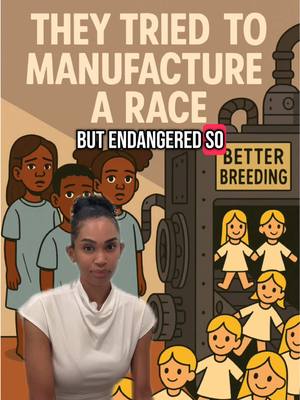Shorts Skapa

WE ALL CAME FROM "BLACK". #news #foryou #fyp #foryoupage #earth #geocentric #middleeast #arabtiktok #science #tiktok #tiktoknews #viral #trends #solarstorm #fypシ #floweroflife #solarflare #flatearthtruth #spirituality #awakening

Russian and American Flags - Part 25 | #storytime

Det här videoklippet bearbetas, kom tillbaka om några minuter

Reparations to Africans have long been a contentious issue. In this clip from a 1965 debate between author James Baldwin and US conservative writer William F Buckley at Cambridge University in the United Kingdom, Baldwin paints a picture of how, through forced labour, Africans played a crucial role in building US wealth. The economic prosperity of the United States during its early years was inextricably tied to the institution of slavery, as the labour of enslaved people contributed to building industries such as agriculture, finance, textiles, and mining. The wealth generated through centuries of free labour laid the groundwork for the economic development and industrialisation that characterise the United States today. The legacy of slavery—compounded by subsequent discriminatory practices, such as Jim Crow laws and ‘redlining’ neighbourhoods to mark areas meant for Africans—has prevented equal access to education, employment, and housing opportunities. That is why many say reparations are a means to acknowledge and address the systemic injustices that have hindered Africans’ economic and social progress in the United States. The consequences of these policies manifest today in higher incarceration rates for Africans, as well as a household wealth ratio of 20 to 1 between white people and Africans. #reparations #africans #debate #author #jamesbaldwin #williamfbuckley #cambridgeuniversity #uk #labour #usa #wealth #economy #slavery #finance #textile #mining #legacy #education #employment #injustice #fyp

They told you “we’re all the same” while building entire institutions to prove they were superior. But here’s what they won’t say out loud: White skin is not ancient. It’s a mutation. A recent one. Less than 15% of the global population even has it. It didn’t arise in Africa, the Cradle of Life. It emerged in Eurasia after early humans had already mastered civilization, astronomy, agriculture, and language. And here’s the kicker — the Neanderthal connection. Europeans carry 2–4% Neanderthal DNA. These were not the brilliant cavemen you were taught about. These were cold-adapted hominins with traits linked to lower sociability, immune system dysfunction, hyper aggression, and lighter skin. Those genes persist today — in behavior, in medicine, in psychology. Even science confirms it. “The lingering effects of Neanderthal introgression on human trait variation” (eLife, 2023) “Quantifying the contribution of Neanderthal introgression to heritability of modern traits” (Nature Communications, 2021) “A high‑quality genome sequence of a Neanderthal woman from Siberia” (Nature, 2014) These traits weren’t an upgrade — they were a cold-world adaptation, a survival script written in scarcity, not harmony. Meanwhile, ancient melanated peoples thrived in tropical and cold climates alike — including the Inuit, Siberian groups, the Ainu, and the Andamanese — without mutating into depigmented forms. They carried resilience, not fear. Harmony, not conquest. And then came eugenics. From Francis Galton, the “father of eugenics,” to Charles Davenport and the American Eugenics Society, scientific racism was weaponized to preserve what they feared was vanishing: a fragile, recessive phenotype. Entire genocides were committed to “purify” bloodlines. Sterilizations. Segregation. Nazi ideology was born out of American theory. But nature doesn’t lie — the mutation isn’t dominant, and it cannot be sustained without artificial control. So what happens when the lie collapses? When extinction anxiety kicks in? When the sun becomes an enemy, not a life source? When the descendants of the Earth awaken? The next chapter is coming. ☀️ Day 7 — Why They Block Out the Sun: The End of Their Timeline ⸻ 🔬 Peer-Reviewed Sources for Day 6: 1. Prüfer et al. (2014). “A high‑quality genome sequence of a Neanderthal woman from Siberia.” Nature. https://www.nature.com/articles/nature12886 2. McArthur et al. (2021). “Quantifying the contribution of Neanderthal introgression to heritability of modern traits.” Nature Communications. https://www.nature.com/articles/s41467-021-24582-y 3. Petr et al. (2023). “The lingering effects of Neanderthal introgression on human trait variation.” eLife. https://elifesciences.org/articles/80757 4. Reilly, S. (2022). “The Contribution of Neanderthal Introgression to Modern Human Adaptation.” PMC. https://www.ncbi.nlm.nih.gov/p....mc/articles/PMC97419 5. Time Magazine: “Neanderthal Genes Still Affect Us Today.” https://time.com/2837/neanderthal-genes-in-you/ #fypシ #viral #explorepage #432hz #subtlealchemy #fba #ados #freedmen #blackindigenous #hiddenhistory #noallies #icepeople

Replying to @Sammy Scarface #mysonne #swayinthemorning #freestylerap #storyteller




